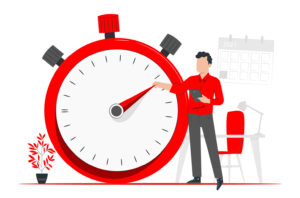In our fast-moving world, managing time efficiently is more essential than ever. Time tracking tools provide valuable insights into how you allocate your hours, helping to identify inefficiencies and opportunities for growth. With a better understanding of your time usage, you can prioritize tasks effectively and optimize your workflow. This article delves into the benefits of time tracking tools and how they can revolutionize your productivity.
Time Tracking: What It Is and Why It Matters
Time tracking offers numerous valuable advantages for boosting productivity. Firstly, it brings transparency and accountability by making the time spent on various tasks visible. This makes it easier to identify inefficiencies that lead to wasted time. Additionally, it helps clarify priorities, enabling you to focus on high-impact tasks that contribute most to your goals. Effective time tracking facilitates better planning and scheduling, allowing you to manage workloads efficiently and avoid last-minute stress. It also emphasizes the importance of breaks and rest periods, improving work-life balance.
For businesses, time tracking allows teams to evaluate performance and make necessary adjustments, fostering a culture of continuous improvement and high productivity. Overall, time tracking empowers individuals and organizations to manage their time more effectively, make informed decisions, and achieve better results.
Time Tracking and Misconceptions: What’s the Truth?
Despite its advantages, time tracking is often misunderstood. Many assume it is only necessary for those struggling with time management or for businesses. However, anyone can benefit from this system to better understand and optimize their time usage. There’s also a misconception that time tracking is cumbersome and time-consuming. Modern tools have made the process quick and user-friendly.
Some believe time tracking stifles creativity, but in reality, it helps allocate dedicated time for creative efforts. Breaking these misconceptions is crucial for anyone looking to adopt effective and disciplined time management practices.
Choosing the Right Technology for Time Tracking
When selecting a time tracking tool, several key features can make a significant difference in usability and effectiveness. Firstly, an intuitive and user-friendly interface is essential, ensuring the tool can be used quickly and efficiently. Secondly, robust reporting capabilities are crucial. Detailed reports and visualizations can help you analyze your time usage patterns.
Integration with other software, calendars, or project management tools can streamline workflows. Customization options, such as categories or tags, allow for a more personalized tracking experience. Additionally, features like automatic time tracking and reminders can make consistent tracking easier. Lastly, ensure the tool is reliable in terms of data security and privacy. Considering these factors can help you choose a tool that enhances your time management and productivity.
The Benefits of Time Tracking
Time tracking provides significant benefits for improving productivity. By making time allocation visible, it fosters transparency and accountability. This helps identify inefficiencies and wasted time. Time tracking also clarifies priorities, enabling you to focus on activities that contribute most to your goals. Improved planning and scheduling allow for better workload management and prevent last-minute rushes. While supporting work-life balance, it also helps businesses analyze team performance and encourage a culture of improvement. Time tracking empowers individuals and businesses to manage their time more consciously, achieving better results.
Enhancing Productivity
Identifying time-wasting activities is a critical step in boosting productivity. Time tracking tools offer valuable insights into tasks where excessive time is spent. Start by analyzing your records to pinpoint tasks or activities that consistently take longer than expected. Common time-wasters include overly long meetings, unnecessary email replies, and unplanned interruptions. Assessing the necessity and frequency of these activities allows you to take preventive measures. For instance, some meetings can be shortened or replaced with emails. You can also schedule email checks for specific time slots to minimize interruptions.
Classifying tasks by urgency and importance helps you focus your energy on work that truly adds value. Techniques like the Pomodoro method or time blocking can improve focus and reduce distractions. By analyzing and minimizing time-wasters, you can dedicate more time to high-priority tasks and achieve a more productive workflow. These methods will guide you in reaching your goals effectively.
Optimize Your Goals for Time Management and Productivity
Time management and productivity are directly tied to setting and optimizing effective goals. Optimizing your goals helps you use your time more efficiently and enhances your productivity. Here are some strategies to consider:
- Set SMART Goals: SMART stands for Specific, Measurable, Achievable, Relevant, and Time-bound goals. Goals that meet these criteria provide clear focus and make it easier to track progress.
- Prioritize Tasks: Categorize your tasks by importance and urgency. For example, using the Eisenhower Matrix, you can classify tasks into four categories:
- Important and Urgent: Tasks that require immediate attention.
- Important but Not Urgent: Tasks that need planning.
- Urgent but Not Important: Tasks to delegate if possible.
- Neither Important nor Urgent: Tasks to avoid.
- Use Time Blocking: Allocate specific time slots in your daily schedule for particular tasks to improve focus. This method minimizes distractions and creates space for deep work.
- Evaluate Regularly: Periodically review your goals and progress. These evaluations help you adjust your strategies and ensure continuous improvement.
- Leverage Technology: Utilize applications and software designed for time management and goal tracking. These tools help you visualize progress and maintain motivation.
By optimizing your goals, you can use your time more effectively and boost productivity. Applying these strategies will contribute to your success in both personal and professional spheres.
Corporate Time Management and Team Productivity
At a corporate level, time management plays a strategic role in ensuring teams achieve their objectives effectively and sustainably. Both team leaders and members must work in harmony towards common goals, requiring conscious time management. Critical steps include planning, fostering strong communication, and ensuring efficient task delegation.
This process impacts not only team performance but also individual motivation and job satisfaction. A better time management culture enhances overall organizational success while fostering a healthy and productive work environment.
Time management is a cornerstone for achieving success and productivity on both individual and organizational levels. Setting effective goals, prioritizing tasks, and tracking time with the right tools are among the most impactful ways to optimize work processes. These approaches not only help you meet your objectives but also improve your work-life balance, leading to a more fulfilling professional life.
Discover how Perwatch can revolutionize your time management and productivity. Our user-friendly and secure platform provides powerful time tracking features to help you achieve your goals more effectively. Ready to boost your productivity? Explore Perwatch now







